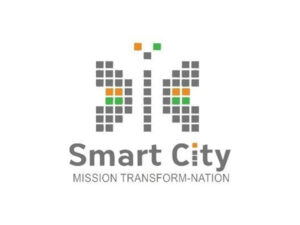Pharma Manufacturing Industry market trends and future growth predictions by PharmaHopers
Panchkula (Haryana) [India], February 25 (ANI/BusinessWire India): Indian pharmaceutical manufacturing industry, also known by the sobriquet “pharmacy of the world” has a substantial share in providing affordable generic medicines.
The pharma industry in India is ranked third in the world for pharmaceutical production by volume, covering 20 per cent of the global supply. The domestic pharmaceutical companies of the country, who were earlier known for their affordable manufacturing of generic medicines, are now being acknowledged for quality-oriented research and development activities. The Indian pharma industry is thriving in this new development ecosystem.
The outbreak of COVID-19 brought a paradigm shift in India’s global image as a volume exporter and shifted it to a value exporter. The statistics configured by IBEF (Indian Brand Equity Foundation) state that the domestic pharmaceutical market stood at USD 42 billion in 2021 and is likely to reach USD 65 billion by 2024 and further expand to reach USD 120-130 billion by 2030. In the face of this exponential growth, India will take lead as a dependable provider of premium medicines to the world.
The Indian pharmaceutical market is fractionated into different therapeutic segments of Anti-Infectives, Cardiovascular, Gastrointestinal, Anti Diabetic, Respiratory, Dermatological, Musculo-Skeletal System, Nervous System, and Others. It can also be bifurcated based on the drug Type (Prescription Drugs and Over Counter Drugs). A Glimpse at Indian Pharmaceutical Market.
As per the stats, Indian Pharmaceutical Market is expected to register a CAGR of 10.7% in the next few years. Although the COVID-19 outbreak stunted the growth of the Indian pharmaceutical industry, the pharma industry bounced back through collaborative initiatives of the government and big pharma giants. To bolster vaccine production, in the year 2021, the department of biotechnology and GOI gave financial aid to many pharma companies to mass producing vaccines to touch the mark of 10 crore vaccine doses per month by September 2021.
The public sector pharma companies like Haffkine Biopharmaceutical Corporation Ltd., IIL Hyderabad, and BIBCOL, Bulandshahr received assistance from the government. In the current scenario, the Indian pharma industry is all set to witness healthy growth owing to digitalization, colossal demand, and a surge in domestic production. The report of IES 2021, substantiates this claim by stating that the domestic pharma market will grow by 3 times in upcoming years.
The Indian pharmaceutical market has a reputation for manufacturing and delivering high-quality medicines across the globe. As per the data of IBEF IN 2022, India nation is home to the greatest number of US FDA-approved units; 741 as of August 2021. Indian pharma companies manufacture myriad product ranges in segments such as generic drugs, OTC medicines, active pharmaceutical ingredients (APIs), vaccines, contract research and manufacturing, and biosimilars and biologics.
As per the sources, the USA is India’s primary export market for pharmaceutical products. To boost investment in the pharmaceutical sector, the government has streamlined the approval time for new facilities. The increased export of generic drugs and extensive research and development activities will boost the market growth.
Key Trends to focus on
Promising growth in Respiratory Therapeutic Category Segment: The rise of respiratory issues amid increasing pollution has resulted in exponential demand for medicines addressing respiratory illnesses. The respiratory drugs mainly comprise bronchodilators, corticosteroids, mast cell stabilizers, anti-IgE antibodies, leukotriene receptor antagonists, antivirals, pulmonary surfactants, and respiratory stimulants, among others.
Respiratory diseases are those that affect the lungs and respiratory tract. Some prevalent respiratory diseases are asthma, chronic obstructive pulmonary disease (COPD), pulmonary fibrosis, pneumonia, and lung cancer. Asthma, reports the highest number of patients followed by COPD, and bronchitis. With such a high burden respiratory diseases creates magnanimous opportunities for growth.
Healthy market growth of Generic Drugs: A generic drug is a medication formulated to be the same as an existing approved brand-name drug in dosage form, safety, strength, route of administration, quality, and performance characteristics.
These drugs do not require extra efforts that go into clinical research and drug discovery. Generic drugs are available at a lower cost; they provide an opportunity for savings in drug expenditure in a country. With so many advantages of generic drugs coupled with low-cost manufacturing in the country, the segment is anticipated to witness tremendous growth.
As per the ICRA report, the government is planning many campaigns to avail free generic medications to half of the Indian population under Pradhan Mantri Bhartiya Janaushadhi Kendras at an estimated cost of USD 5.4 billion. All the endeavors favor the remarkable growth of generic drugs.
Future predictions about Indian Pharmaceutical market
– As predicted by Indian Pharmaceutical Alliance (IPA) Secretary General, Sudarshan Jain, the Indian pharma industry is expected to grow to USD 130 billion by 2030 and become the leading provider of medicines to the world.
– In the words of Dr Viranchi Shah, National President, of the Indian Drug Manufacturers Association (IDMA), the production of Linked Incentive Schemes (PLIs) and cluster manufacturing are contributing to the pharma sector’s growth. As per him, India is looking ahead to being number one in the next 25 years.
Final Takeaway
The favorable growth conditions and support from the government are paving the way for exponential growth in the Indian pharmaceutical Industry. With the Indian economy becoming the fifth largest in the world, there is no better time for India to take the front seat as a global producer of quality pharmaceutical products.
This story is provided by BusinessWire India. ANI will not be responsible in any way for the content of this article.






